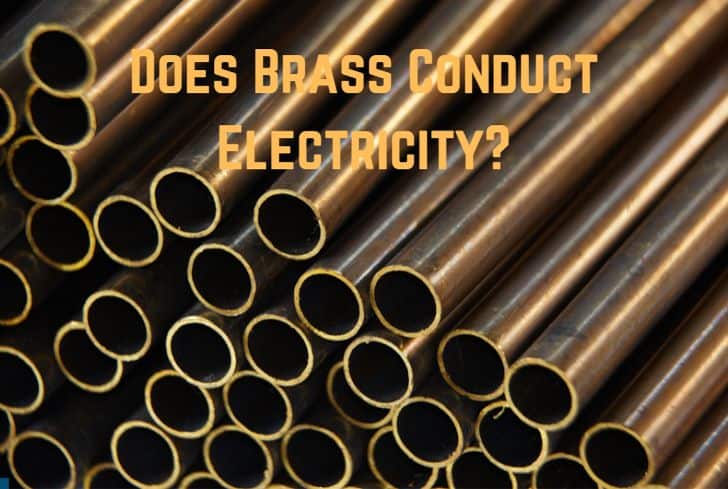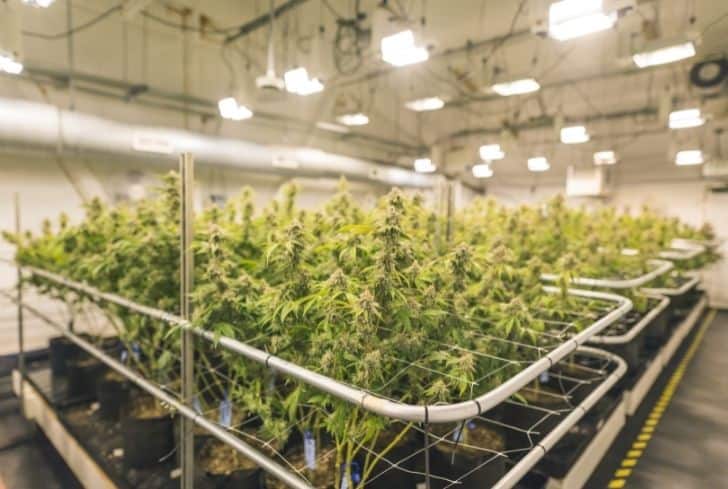Can Plants Grow in Brass and Copper Pots?

Plants & flowers can bring the beauty of nature inside your home. But is it a good idea to use brass or copper vessels as planters? Perhaps you are concerned about the chemical properties of the metal harming the soil and the plant. Or the other way around, wondering if the soil will corrode your metallic pot. In this article, we will answer all your question about brass and copper pots.
Brass is an alloy of copper and zinc. Because of its bright, gold-like appearance, brass has always been a popular material for decoration. In some Asian countries, brass vessels such as Lota and Kunda have traditionally been used in religious ceremonies, but because of their vintage look, décor enthusiasts are now also using them as pots.
We will look at the potential risks of using bronze/copper pots, discuss how to set up metallic planters properly, and finally talk about the pros and cons of using such pots.
Can You Grow Plants in Brass Pots?
Yes. A brass pot can give your interiors a wonderful antique aesthetic, and it looks much better than the usual plastic or clay pots. But does it have any side effects for the plant?
Brass contains copper, which is an essential micronutrient for plants. Plants use copper in photosynthesis as well as other biochemical processes. But in large amounts, copper can be toxic for your plants.
It can cause problems such as iron chlorosis (yellowing of plant leaves due to iron deficiency), burnt tips on leaves, and slow growth. Conversely, the soil and the plant can also have a damaging impact on the pot, as the organic elements will exacerbate corrosion of the metal.
But these risks can be mitigated if you follow the right methods of setting up a brass planter. Keep reading to find out how to use a cachepot system with proper drainage that would allow you to use a brass pot to grow plants.
Can You Grow Plants in Copper Pots?
Yes. You can definitely use copper pots to grow plants. Copper planters—available in a large variety of sizes and shapes, with detailed textures—look beautiful and do not rust. They deter pests like snails, and because of their heat conducting properties, copper planters warm up the soil properly.
Again, one might get concerned about the adverse effects of the interaction between the soil and the metallic pot. But through the right technique, we can ensure that neither the soil nor the metallic pot is harmed. Continue reading to find out how to use inner linings, cachepots, etc. to create the perfect brass/copper pot.
Are Copper & Brass Toxic to Plants?
As discussed above, an excessive amount of copper can impede the plant’s intake of nutrients, which can lead to issues like iron chlorosis and slow growth. Copper also kills the tips of small feeder roots.
Some suggest that these problems occur only if the soil has excessive copper; they wouldn’t happen in copper planters because only a negligible amount of copper can leech from the container. But one should not take really take this risk.
What we need to do is to set up the planter in such a way that neither the metal nor the soil comes into direct contact with each other, thereby completely removing all concerns about toxicity. That’s what we will discuss below.
Do Copper Planters Rust?
No, copper does not rust because it contains too little iron. Rusting refers to the formation of iron oxides. It occurs when iron or iron alloys (like steel) are exposed to water and oxygen for a long period of time. Only iron and iron alloys rust, hence copper cannot.
But even though copper does not rust, it still corrodes. Over time, a blue-green film or patina can form on its surface. This patina does not flake like rust and looks rather beautiful—some people might even prefer this look to the original state of copper.
The Statue of Liberty has a blue-green color precisely because of this oxidation. Originally it was shiny brown, but over time, the copper in its outer surface reacted with air to form a patina.
The patina not only looks exquisite but also protects the underlying metal from weathering. This is why copper products and structures are so durable.
Is it Safe to Grow Vegetables in Rusty Containers?
Yes. Even though rust does not look attractive and is equated with decay, it does not harm plants in most cases. Plants cannot absorb the metal container’s rust because it is not soluble in water. However, there are some exceptions to this rule. If the soil is very acidic, then the container’s iron will become soluble in water and the plant’s roots will absorb them.
This can lead to iron toxicity in the plant. So, if you have no choice but to use rusty containers, make sure that your soil is non-acidic (has a pH value higher than 8.0). You must also make sure that the rusted metal does not have any toxic material on it like paint or oil.
It’s common to see rust on your plant pots when they are outdoors. But don’t worry, plants can grow perfectly well in rusty containers and are safe to eat.
How to Set Up a Brass Planter?
As we have discussed, there are some potential risks of using brass planters, so it’s important to know the right ways of setting them up. But before we do that, we must understand that we should not fill soil directly into our brass vessel. Direct contact with organic, damp elements fastens the process of metallic corrosion. So, we must use a cachepot system.
In this method, we do not pour the soil directly into the pot. Instead, we leave the plant in its original plastic nursery can and put it into a larger, decorative pot. This ensures that the contact between the decorative pot (brass vessel in our case) and the soil is minimal.
Follow these steps:
- Take a dry brass vessel of your choice, preferably one with a large flattened rim, and clean it.
- Place a plastic saucer inside the brass vessel. This is to collect the excess water released by the soil. The saucer should be larger than your plant can so that it can cover it from all sides.
- If the nursery can is too short (as compared to the brass vessel), you can add something at the bottom to elevate its height, like upside-down terracotta pots. On the other hand, if your nursery can is too tall, remove the plant and take out some soil from the bottom. Cut down the top of the plastic nursery can and put the plant back in it.
- Gently lower your plant in its (adjusted) plastic nursery can on top of the saucer, into the brass vessel.
And there you have it, a plant that will grow healthily and look elegant inside your house. By letting the plant stay in the plastic nursery can, we ensure that there is minimal contact between the organic elements and the brass pot, which is beneficial for both.
Some gardeners, instead of using a cachepot system, line the inside of the pot with plastic to keep the soil and the metal separate. But the cachepot system is a much better method because it not only keeps the soil and the metal separate but also collects the extra water in the saucer.
Plus, this saucer remains hidden inside the decorative (brass) pot. If you were using the plastic lining method, you would have to go through the hassle of drilling a hole in your brass vessel. Then the saucer would have to be placed outside the vessel, which isn’t very attractive.
Moreover, our cachepot system also allows makes cleaning easy. You can simply lift your plant’s nursery can, remove the saucer, and wash it in the sink. Then you can clean the interiors of your brass vessel too.
Pros and Cons of Growing Plants in Copper Pots
Pros
- Metal pots are quite durable. Unlike clays pots, coppers pots don’t crack if accidentally knocked over.
- As discussed above, copper does not rust like iron. It eventually forms a blue-green patina, which only makes it look more beautiful.
- Copper pots are often used as a cachepot, which makes maintenance (cleaning, repotting) quite easy.
Cons
- When using metal containers, heat can be a problem. When left outdoors under the scorching heat of the sun, these containers can become really out, which can dry out the soil and damage your plants. This can be solved by placing the pots in shady areas, and you can also consider covering the inside of the pot with a plastic liner to create a heat barrier.
- Because of the potential risks of the interaction between copper and soil, you will need to take some extra steps to use copper pots. But again, the whole cachepot system is ultimately easier to maintain after the slightly longer initial setup.
Conclusion
In this article, we have looked at using brass and copper vessels as pots. Both these metallic containers can work quite well as planters, as long as you are following the right steps. The interaction between metal and soil can be harmful to both.
But these risks can be mitigated if we use the cachepot system combined with a saucer for draining. We also discussed how corrosion of copper is different from rusting. Finally, we looked at the pros and cons of using copper pots.






